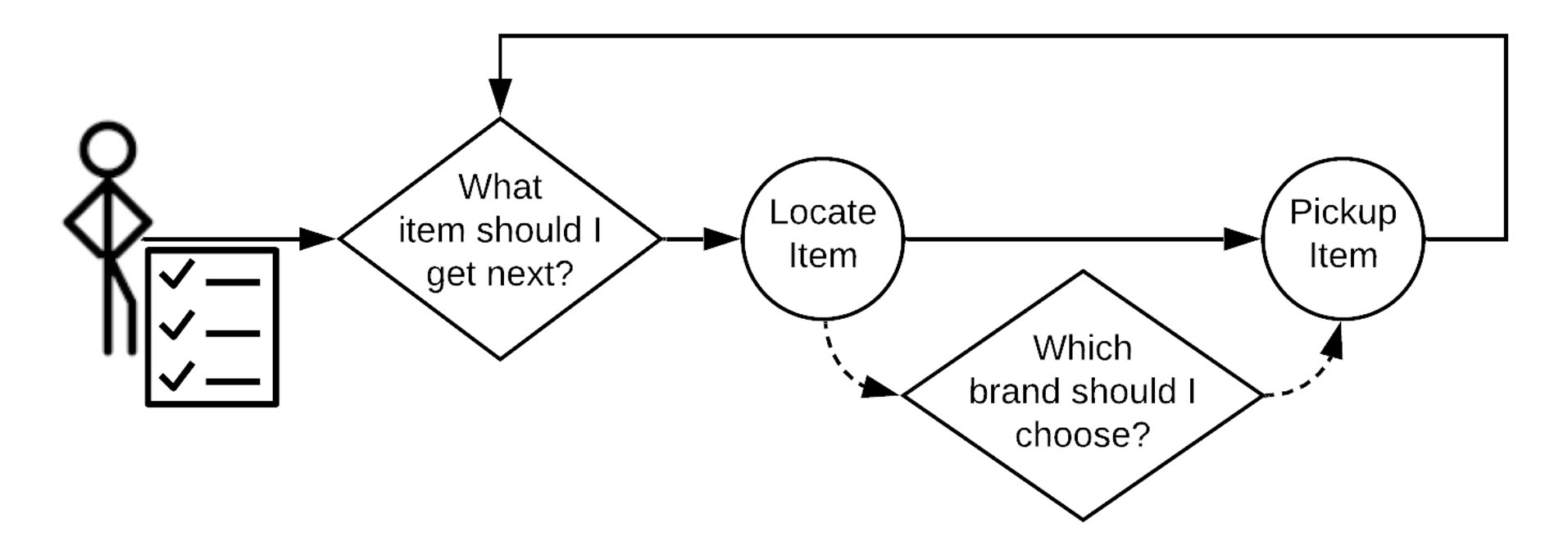User Experience – or UX – describes the flow of action performed by a user – in most cases, a person such as yourself. This flow of action is also called a process, and the experience someone has when participating in or performing that process is their User Experience. Take for example the process of shopping in a store.

You enter the store with list in hand. Were your expectations met when entering the store? If you expect baskets to be available but none are, that’s a negative experience; if you expected parking to be difficult but found it to be calm and easy, that’s a positive experience. By meeting or exceeding your expectations, the store is able to uphold or improve your user experience. Companies should strive to beat their customers’ expectations in all stages of their processes – this creates great user experiences. But each user’s expectations are unique, and identifying the expectations to focus on requires knowledge from process experts. For now, let’s continue on into the store.

You look at your list and choose an item to find first. Once found, you see a wall of brands – with the one you saw advertised on a billboard presented at eye-level. That’s no coincidence as those popular brands are willing to pay for prime shelf-position. These products get picked up readily by customers who need to grab-and-go. Is this a good experience when shopping? It’s definitely efficient, but you won’t know if you like the product until after you’ve left the store – so maybe there’s room for improvement here. Presenting more relatable information in the aisle, information like a taste-test, could help folks test their preferences before purchase (like Costco’s sample stands, for example).
As we walk through this process – or any other – we can criticize it and identify ways to improve the user experience. You can do the same with processes you’re involved in. Are there processes within your organization that could be improved? Think about where your expectations are not being met.
Let’s finish our shopping spree.
You’ve collected the items on your list and head to checkout. You decide to use the infamous self-checkout machine. Usually a smooth and efficient experience, but today it’s feeling buggy. It freezes while scanning and the light above the machine blinks to alert the attendant…but there’s no attendant in sight. Is this a good experience? Not efficient, not enjoyable, and probably worse than what you were expecting.
Your experience at the store is unique, but by collecting information on many customers at the store – many users – a general view of user expectation can be created and used to design expectation-beating user experiences. For businesses, it’s important to understand the expectations and experiences of the users within their processes. Employees and customers, the users within businesses, all want their expectations met or exceeded. Not delivering on this puts businesses at risk of losing their users to competition who understand how to forecast their users’ expectations.
How can your company discover their users’ expectations and optimize their processes to exceed those expectations? With data science and systems of intelligence.
Techniques in data science, such as machine learning, provide businesses the tools to identify patterns in user behavior, understand their expectations, and ultimately give insight into how their behavior impacts key outcomes. This insight is the foundation for creating systems of intelligence. These systems combine the power of predictive machine learning models with traditional cloud automation tools to inject data-driven suggestions into processes, with the goal of exceeding user expectations.
Users want to experience intelligence in their processes. We can deliver that by presenting the most appropriate information for their scenario and profile, suggesting optimal actions to take given that information and desired goals, and enabling those actions to be as efficient as possible. Users will seamlessly flow through their actions, confident that they’re making the best decisions at each step. This improves user experience, raises user enjoyment, and frees up user time.
Atrium designs, builds, and manages systems of intelligence that enhance and support intelligent user experiences. We would love to speak with you about how to make your organization more intelligent.









